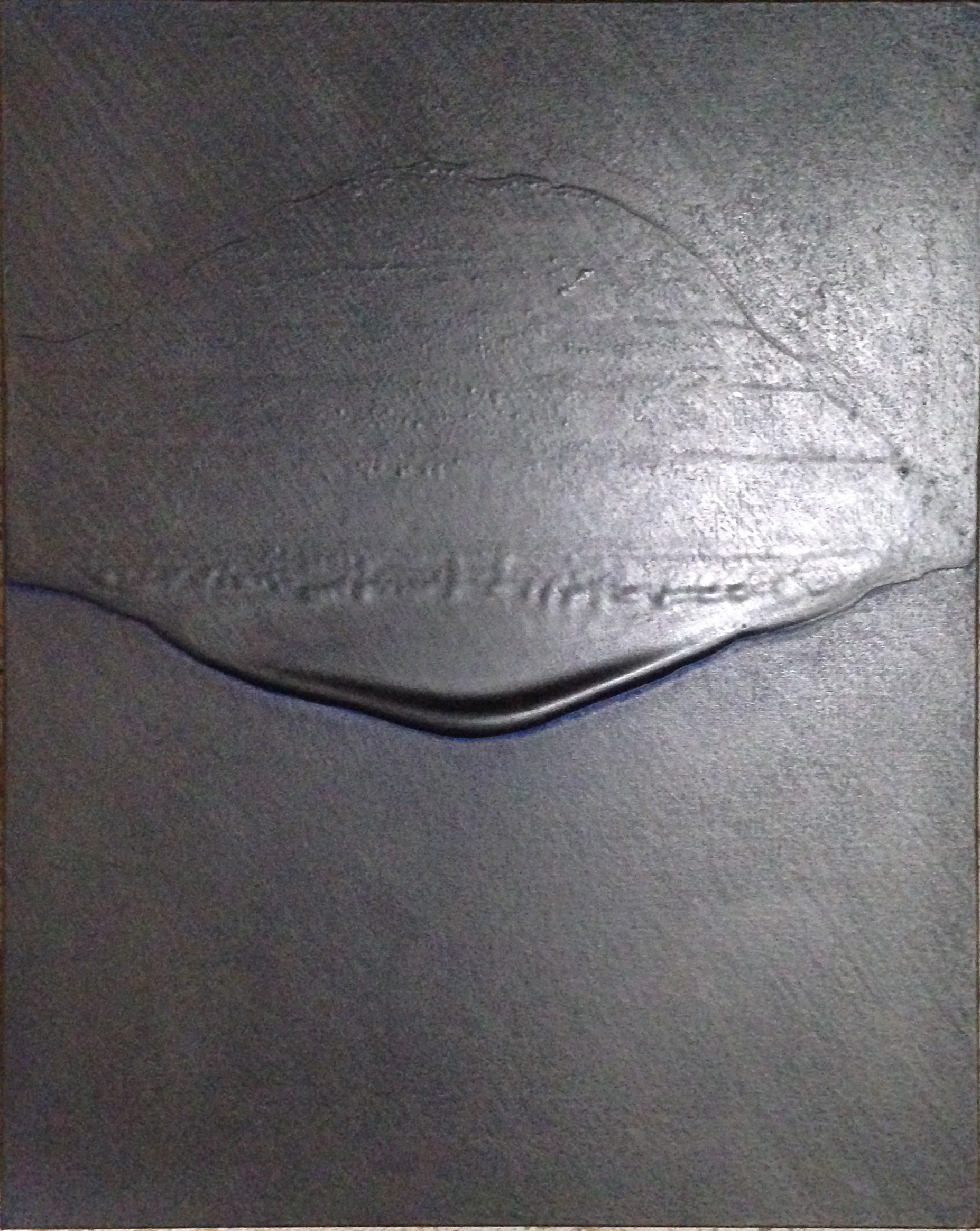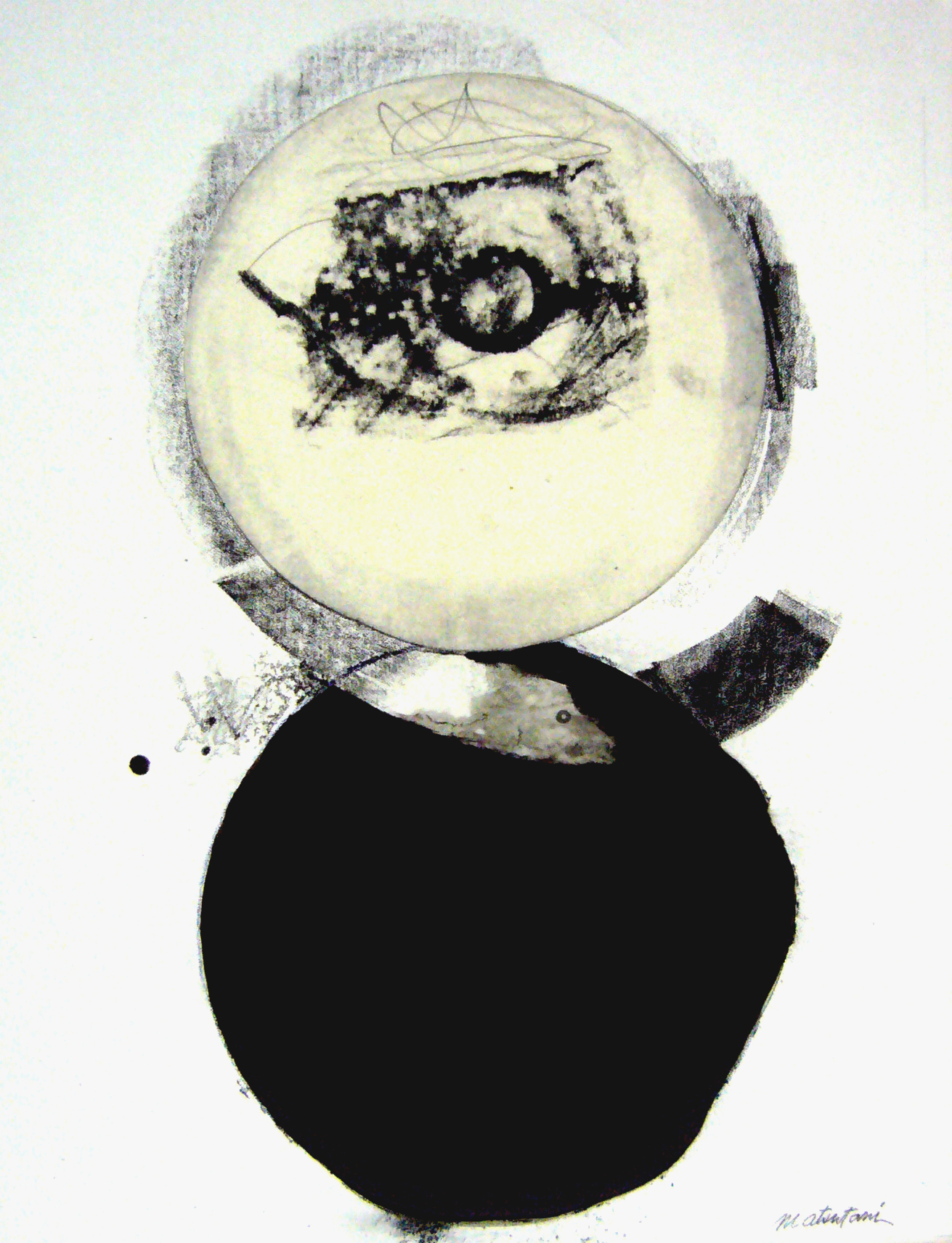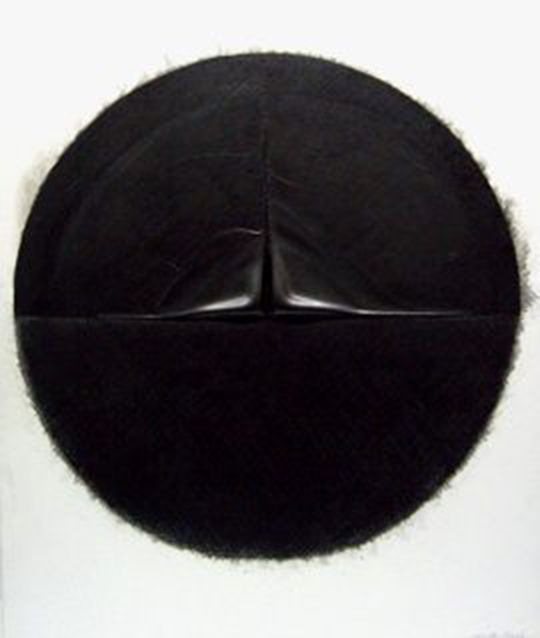Takesada Matsutani was born in Osaka in 1937. He first aspired to become a Japanese-style painter and joined the Gutai Art Association in 1960 after being referred by Sadamasa Motonaga. Using a bond invented in Osaka shortly after the war, Matsutani began to produce relief-like works around 1962, incorporating organic forms created by the material itself. The sensual shapes and textures that bulge and droop over a pictorial plane were highly acclaimed by Jiro Yoshihara, the leader of the Gutai Art Association, for showing the possibilities of a new kind of painting. At the age of 29, Matsutani went to France as a French government-sponsored student and entered the printmaking studio of S. W. Hayter. He set up his atelier in Paris, and from around 1980, Matsutani began to develop his unique world of black and white with a body of work in which the surface of the piece is painted over with pencil. Matsutani’s highly spiritual black-and-white works, materialized with his keen sensibility that transcends the East and the West, have become the signature of his creation. Matsutani continues to expand the possibilities of his expression from his studio in Paris, actively engaging in performance and installation in addition to his two-dimensional work.
Matsutani’s solo exhibitions include MATSUTANI WAVES, Nishinomiya Otani Memorial Museum of Art (2000); Stream, The Museum of Modern Art, Kanagawa (2010); Takesada Matsutani; A Matrix, Hauser & Wirth (2013); MATSUTANI CURRENTS, Nishinomiya Otani Memorial Art Museum (2015); and Takesada Matsutani, Centre Pompidou (2019). He also participated in group exhibitions including Gutai: The Spirit of an Era, The National Art Center, Tokyo (2012); Gutai: Splendid Playground, Guggenheim Museum (2013); Into the Unknown World – GUTAI: Differentiation and Integration, The National Museum of Art, Osaka and Nakanoshima Museum of Art, Osaka (2022). Matsutani’s work was included in the Venice Biennale for the main section in 2017.
His works are in the collections of major museums abroad, including the Centre Georges Pompidou; M+ (Hong Kong); the Rashofsky Collection (Dallas); the Museum of Modern Art (Paris); the National Victoria and Albert Museum, and the Guggenheim Abu Dhabi, as well as numerous museums in Japan, including the National Museum of Modern Art, Tokyo; the National Museum of Art, Osaka; the National Museum of Art, Osaka; the Hyogo Prefectural Museum of Art; the Nakanoshima Museum, Osaka; and the Ashiya City Museum of Art.
---------------------
CV
1937
Born in Osaka
1960
Started to use a bond,glue,for painting
1960
First participation in The 9th Gutai exhibition, keeping exhibiting in all Gutai exhibition until it's breakup in 1972
1963
Recommended to be Gutai Associoation member
1966
Grand prix in Mainichi Competision
1967
Entered S. W. Heiter's printing studio Atelier 17, working there as an assistant
1970
Left Atelier 17 and had his own silkscreen studio in Montparnasse
2023
"Takesada Matsutani" Almine Rech, Paris, France
Selected Solo Exhibitions
1993
“The 60s and Recent Work,” Otani Memorial Art Museum, Nishinomiya, Japan
1999
“Matsutani’s Prints, 1960-1988,” Ashiya City Museum of Art and History, Japan
2002
Solo show at Cairns Regional Museum Gallery, Cairns, Australia
2007
“Matsutani – rétrospective,” Centre culturel André Malraux, Agen, France
2010
"Stream" The Museum of Modern Art, kamakura, Kanagawa
2015
"Currents", Nishinomiya Otani Memorial Art Museum, Japan
2018
Gallery Hosokawa, Osaka
2019
Centre Pompidou, Paris, France
2019
"Takesada Matsutani" Hauser & Wirth, Zurich, Switzerland
2019
"Takesada Matsutani" Shimada Gallery, Kobe
2020
"Takesada Matsutani;Prints1967-1977", Toulouse, France
2021
Takesada Matsutani: Loop—The Asia Art Center Collection, Taipei
2022
"Takesada Matsutani-Combine", Hauser & Wirth, New York
2024
"Takesada Matsutani Exhibition" Tapisseries et gravures monumentales, Institut français du Kansai, Kyoto
2024
"TAKESADA MATSUTANI" Tokyo Opera City Art Gallery, Tokyo
Selected Group Exhibitions
1968
Musée d”art moderne de la ville de Paris, “1ère Biennale internationale de l”estampe”, Paris, France
2012
“Gutai: The Spirit of an Era,” National Art Center, Tokyo, Japan
2012
Artistic interactions: avant-garde Kansai' Otani Memorial Museum of Art, Nishinomiya, Hyogo
2017
La Biennale di Venezia, 57th International Art Exhibition, ‘Viva Arte Viva’, Venice, Italy
2018
”CONFLUENCE. Aliska Lahusen and Takesada Matsutani”, Manggha Museum, Krakow, Poland
2018
JAPANESE POST-WAR ART, Gallery Yamaki Fine Art
2020
'Expanding Art History' Otani Memorial Museum of Art, Nishinomiya City, Nishinomiya, Japan
2020
“Takesada MATSUTANI-Yukio FUJIMOTO: Rhythm” Gallery Yamaki Fine Art, Kobe, Japan.
2020
Taipei Dangdai Art&Ideas Gallery Yamaki Fine Art Booth, Taipei, Taiwan
2021
Takesada Matsutani, Hauser & Wirth, Zurich, Switzerland
2022
Art Collaboration Kyoto 2022, Booth: Gallery Yamaki Fine Art, Kyoto
2022
Study: Osaka Kansai International Art Festival 2022, Booth: Gallery Yamaki Fine Art, Osaka
2023
Takesada Matsutani & Kate Van Houten – New Prints, Yoshiaki Inoue Gallery, Osaka
2024
Taipei Dangdai Art&Ideas Booth: Gallery Yamaki Fine Art, Taipei, Taiwan
2025
”Deau" W・I・S・H, Kobe
2025
”MOMAW Collection: Modern Art" The Museum of Modern Art, Wakayama, Wakayama




